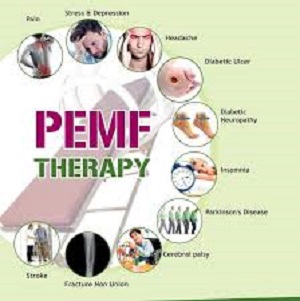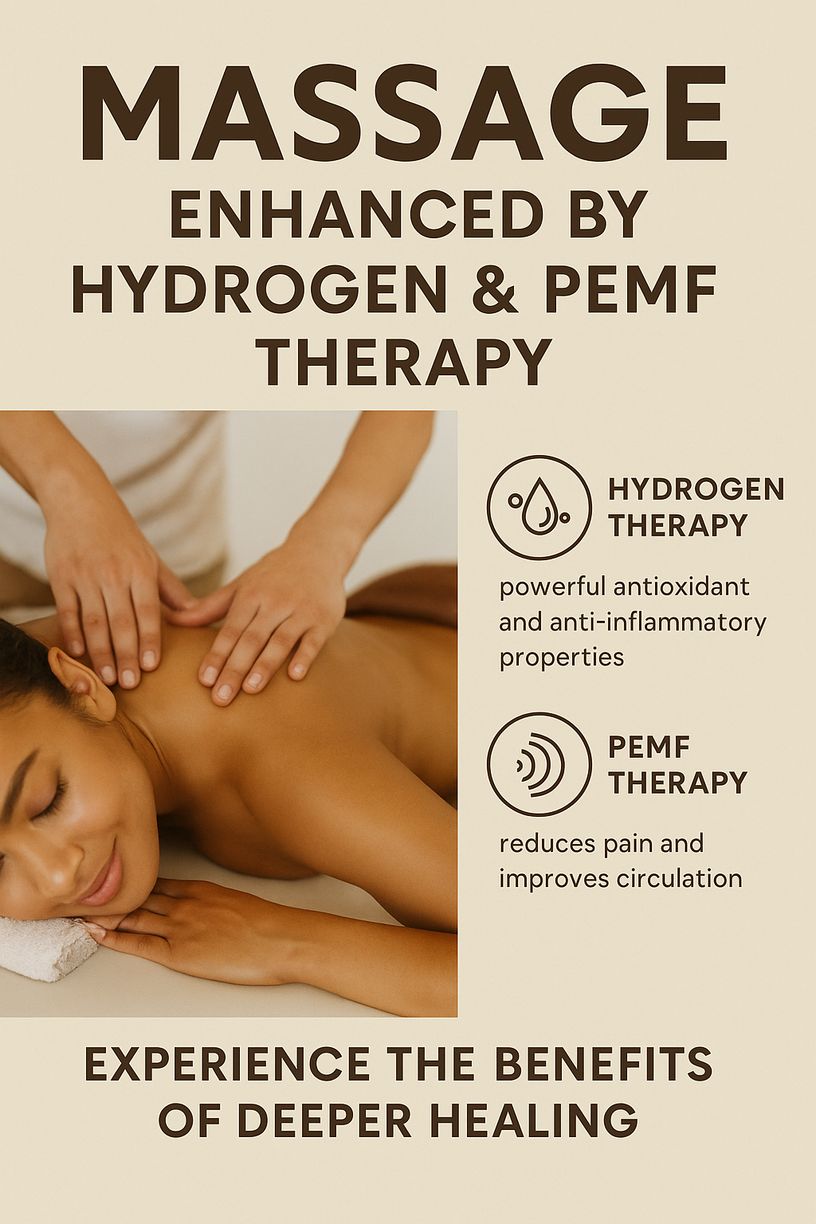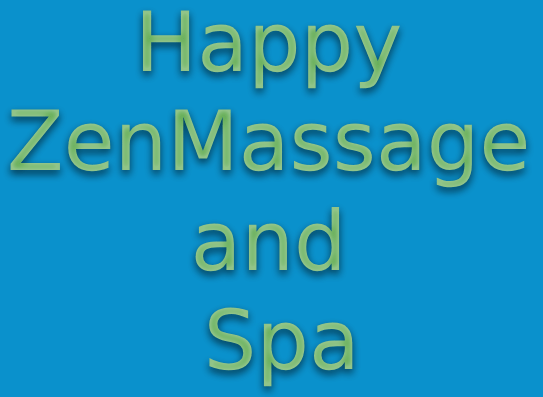PEMF (Pulsed Electromagnetic Field) Therapy
PEMF (Pulsed Electromagnetic Field) therapy uses controlled, pulsed electromagnetic fields at specific frequencies and intensities to interact with the body's natural bioelectrical processes at the cellular level. Its primary functions and intended benefits are:
- Stimulating Cellular Repair & Function:
- Core Mechanism: PEMF devices generate electromagnetic pulses that penetrate tissue. These pulses induce small electrical currents within cells.
- Ion Channel Effects: These currents influence ion channels (like calcium, potassium, sodium) in cell membranes. This is crucial because ions are key to cellular communication, energy production (ATP), and overall function.
- ATP Production Boost: PEMF is believed to enhance the efficiency of mitochondria (the cell's powerhouses), leading to increased production of ATP (adenosine triphosphate), the primary cellular energy currency. More energy supports all cellular repair and maintenance processes.
- Membrane Potential Optimization: Healthy cells maintain a specific electrical charge across their membranes. Injury, stress, or disease can disrupt this. PEMF may help restore optimal membrane potential, improving cell resilience and function.
- Reducing Inflammation:
- PEMF appears to modulate the body's inflammatory response. It can decrease the production and release of pro-inflammatory cytokines (signaling molecules) while promoting anti-inflammatory cytokines.
- This reduction in chronic inflammation is a key factor in alleviating pain and promoting healing in conditions like arthritis, tendonitis, and injuries.
- Improving Circulation & Oxygenation:
- The induced electrical currents and effects on nitric oxide production can help relax blood vessels (vasodilation).
- Improved blood flow delivers more oxygen and essential nutrients to tissues while enhancing the removal of metabolic waste products (like lactic acid) and inflammatory mediators. This supports healing and reduces pain.
- Promoting Tissue Healing & Regeneration:
- By boosting cellular energy (ATP), reducing inflammation, and improving circulation, PEMF creates an optimal environment for tissue repair.
- It stimulates the activity of osteoblasts (bone-building cells), chondrocytes (cartilage cells), fibroblasts (connective tissue cells), and other cells involved in healing bones, muscles, tendons, ligaments, skin, and nerves.
- Alleviating Pain:
- This is one of the most common uses and reported benefits. Pain relief is achieved through multiple pathways:
- Reducing Inflammation: A major source of pain.
- Improving Circulation: Flushes out pain-causing substances.
- Modulating Nerve Signals: PEMF may influence how pain signals are transmitted along nerves and processed in the brain and spinal cord, potentially reducing the perception of pain.
- Relaxing Muscles: Can help ease muscle spasms and tension contributing to pain.
- Enhancing Cellular Detoxification:
- Improved circulation and optimized cellular function may support the body's natural detoxification processes at the cellular level.
Key Applications Based on These Functions:
- Orthopedic Conditions: Fracture healing (non-union), osteoarthritis, rheumatoid arthritis, osteoporosis, tendonitis, bursitis, sprains, strains, back/neck pain.
- Wound Healing: Diabetic ulcers, venous ulcers, post-surgical healing.
- Pain Management: Chronic pain syndromes, neuropathic pain, fibromyalgia, post-operative pain.
- Soft Tissue Repair: Muscle tears, ligament injuries.
- Neurological Conditions: Some use for nerve regeneration, migraines, depression, anxiety, sleep disorders (effects on cellular energy and neurochemicals), though evidence is often more preliminary here.
- General Wellness & Performance: Reducing fatigue, improving sleep quality, enhancing recovery from exercise, reducing stress.
Important Considerations:
- Not a "Cure-All": PEMF is generally considered a complementary or adjunctive therapy, not a replacement for conventional medical treatments.
- Variable Evidence: While there is strong scientific evidence supporting its efficacy for specific conditions (like bone healing and certain types of arthritis/pain), evidence for other uses is more limited or preliminary. Research is ongoing.
- Safety: PEMF is generally considered very safe for most people when used appropriately. Contraindications typically include pregnancy, use near electronic implants (pacemakers, insulin pumps), organ transplants, active bleeding, and certain cancers.
In essence, PEMF therapy aims to "recharge" and optimize cellular function, reduce inflammation, improve blood flow, and promote natural healing and pain relief processes within the body.

MASSAGE + PEMF THERAPY
Combining massage therapy with PEMF (Pulsed Electromagnetic Field) therapy is an emerging wellness approach that aims to leverage the benefits of both modalities for enhanced recovery, pain relief, and overall well-being. Here’s a detailed breakdown:
How They Work Together:
- Complementary Mechanisms:
- Massage: Uses mechanical pressure to relax muscles, improve circulation, break up scar tissue, and reduce stress.
- PEMF: Delivers electromagnetic pulses to stimulate cellular repair, reduce inflammation, and improve energy (ATP) production at the mitochondrial level.
- Synergistic Effects:
- Enhanced Circulation: Massage boosts blood flow mechanically, while PEMF optimizes cellular function for better oxygen/nutrient delivery.
- Deeper Relaxation: Massage eases physical tension; PEMF may calm nervous system activity.
- Accelerated Recovery: PEMF supports tissue repair at the cellular level, while massage clears metabolic waste (e.g., lactic acid).
Potential Benefits:
- Pain Relief: Combined anti-inflammatory (PEMF) and muscle-relaxing (massage) effects may target chronic pain (e.g., arthritis, back pain).
- Faster Injury Recovery: Reduced swelling + improved tissue repair.
- Stress Reduction: Dual impact on physical tension and nervous system balance.
- Improved Mobility: Loosened muscles (massage) + reduced joint stiffness (PEMF).
Common Application Methods:
- Sequential Use: PEMF applied before massage to prep tissues or after to amplify recovery.
- Integrated Sessions: Using PEMF mats/pads during massage (e.g., client lies on a PEMF mat while receiving hands-on therapy).
- PEMF-Enhanced Tools: Massage devices (e.g., handheld massagers) with built-in PEMF technology.
Considerations & Safety:
- Evidence: Limited large-scale studies on the combination, though both therapies individually show promise.
- Contraindications: Avoid PEMF if pregnant, using a pacemaker/ICD, or with epilepsy. Massage precautions apply (e.g., acute injuries, blood clots).
- Device Quality: Use only FDA-cleared or CE-certified PEMF devices.
- Professional Guidance: Consult a healthcare provider, especially for chronic conditions.
What to Expect in a Session:
A typical combo session (60–90 mins) might include:
- PEMF application (15–30 mins via mat or localized device).
- Therapeutic massage (Swedish, deep tissue, or myofascial).
- Post-treatment hydration/rest to support detoxification.
Bottom Line:
While combining massage and PEMF is theoretically beneficial and anecdotally praised for enhanced recovery, more research is needed. If you explore this:
- Choose licensed therapists trained in both modalities.
- Communicate health conditions openly.
- Start with shorter sessions to assess tolerance.
Always prioritize evidence-based care and consult your doctor before trying integrative therapies!

